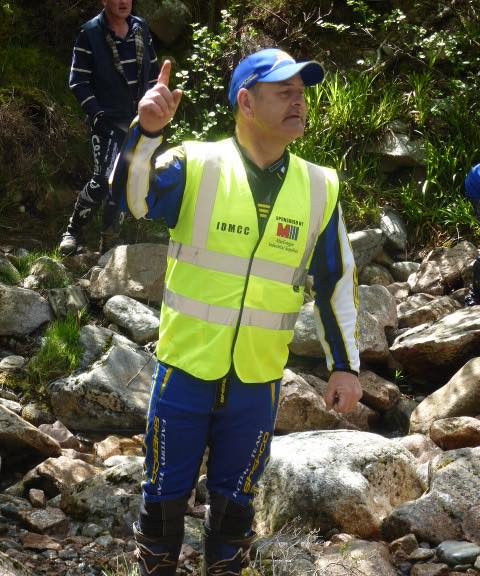This page is for information about observing and setting out IDMCC events:
Club Contacts for Observing:
Jimmy Jenkins – 07798904066
or Nigel Robertson – 07743854206.
SETTING OUT EVENTS:
As of 2019, a new structure as to who will ‘set out trials’ will be implemented. As discussed over numerous committee meetings it has been agreed that from 2019 each committee member will be allocated a trial in the year at which they have to organise club members to set out alongside themselves.
The aim is to help introduce club members who are novices to ‘setting out a trial’ by grouping them with an experienced club member to set out an event.
For many year’s events organised by the club have been set out by the same small handful of members and a line must be drawn before these helpful individuals no longer want to offer their services thus causing trials and the club to suffer.
Once the dates of 2019 events are confirmed, be expected to be contacted by a member of the committee regarding forth coming events asking for your assistance. If you wish to put yourself forward for events held in a certain location please do so as the club and committee will be very grateful.
Anyone member who agrees to an event but then has to pull out must find a member to replace them.
Club rule 14 states: ‘Each Senior Youth and Adult club member who is an SACU licence holder, must be prepared to assist with the organisation, setting out and/or observing etc. of trials when requested. Failure to do so may result in non-renewal of membership, which will be at the discretion of a Disciplinary Committee.’
Setting out of an event allows those who assisted to participate in the event free of charge. And at the yearly award their name will be entered into a prize draw.
Any club member (that is not part of the committee) who would like to come along to committee meeting is welcome to do so, to see and have an input on items that will be discussed.
You may actually enjoy the experience of helping YOUR club.
The Inverness and District MCC committee would like to thank all club members for their continuous support over previous years and for years to come.
OBSERVING:
A Guide to both Riding and Observing at Trials
This document is an explanation for the rules of solo observed trials as used by SACU affiliated clubs. These rules are based on the ACU rules for non-stop solo trials (TSR22B).
Clean
Penalty = 0 Marks.
A rider riding a section without footing or failure penalty as described below shall be unpenalised and given a clean.
Footing
Penalties for ‘Footing’
Footing once = 1 Mark.
Footing twice = 2 Marks.
Footing three or more times = 3 Marks.
Footing will be considered to have occurred if any part of the rider’s body touches the ground or the rider benefits from any part of their body leaning on an obstacle (tree, wall etc.), without stopping the progress of the machine. Footing outside the lateral limits of a section does not constitute a failure but should simply be classed as footing. Forward motion must be maintained at all times otherwise the rider will be penalised for stopping as outlined below.
Failure
Penalty for failure = 5 Marks
A failure is considered to have occurred if:
- The machine ceases to move in a forward direction – no matter how brief the period – A Stop!.
- The rider dismounts from the machine. Dismount will be deemed to have occurred when both of the rider’s feet are on the ground at the same side or behind of the machine.
- The machine does not stay within the intended limits of the section and within each marker.
- If any wheel of the machine crosses any boundary tape or marker of the ‘intended route’ whether the wheelis on the ground or airborne before the front wheel spindle passes the ‘Section End’ markers. (The intended route where section markers are used is a straight line between markers or in the event that the markers are placed on a corner the intended route is as follows. For marker on the inside of a turn, the limit should be taken as a straight line between the markers. Inside = Straight. For markers on the outside of a turn the limit should be taken as the natural curve between any three consecutive markers. Outside = Curve.)
- The rider is held responsible for displacing a flag, marker, support or tape in an observed section. Displacinga card style marker by striking its support (rock, stone etc) whilst staying within the section will not be penalised a failure and no marks should be given.
- Travelling in a direction against the direction of the section or a machine crossing its own tracks to complete a loop.
- The machine or rider receives outside assistance within an observed section.
- A rider or person having an interest in a rider’s performance, who in any way alters the severity of a section without the authority of a recognised official.
The observer shall use their discretion and apply the rules fairly and consistently at all times.
If the rider moves either wheel to the side If the machine is moving backwards, With-out forward motion = 5 Marks with or without footing = 5 Marks.
The rider dismounts the machine and has The machine crosses a boundary both feet on the ground, on the same side or with either wheel on the ground behind the machine. The handlebar of the or airborne. The machine passes machine touches the ground = 5 Marks the wrong side of a boundary marker = 5 Marks
The machine crosses its own tracks by doing A third party touches the rider or machine a complete loop = 5 Marks To push on the tape or remove a natural obstacle.
The rider or assistant changes the severity of a section = 5 Marks
It is a failure to displace a marker. By definition, to touch a marker is to displace it from its static position. An exception would be if the marker, tape or flag were to be blown against the machine. (The Scottish Six Days Trial differs slightly in that if a machine touches or runs over a marker even although it is not dislodged this carries a 5 mark penalty)
Baulk
A baulk is deemed to have occurred if a rider, whilst attempting an observed section, is prevented from making a bona-fide attempt due to some outside obstruction. Should a rider claim a baulk, the observer may, at their discretion, allow a rerun of the section. The observer’s decision as to whether a rerun is permitted is final. Should a rerun be granted, any marks lost prior to the point of the baulk on the original attempt shall stand, and the section shall be observed from the point of the baulk.
Observing Tips
Choose your observing position carefully. Avoid having to move around whilst observing.
Be prepared to define the section route(s) and its limitations to riders that ask.
If on arrival at your section the route(s) is unclear to you please bring this to the attention of the clerk of the course who
should check the section prior to the first competitor arriving.
The observer is responsible for replacing any dislodged markers and checking that they have been replaced in the correct
position, so walk the section carefully so as to be familiar with the route and all the markers.
Make rider’s aware that you are the observer.
Give a clear signal to the waiting rider that you are ready and that they can begin the observed section.
Don’t allow yourself to be distracted whilst observing.
Make sure that the section is clear and that any moved markers are replaced before permitting the next rider into the section.
It is always the responsibility of the rider to inspect a section before riding it. The Observer is not responsible for pointing out any changes that may occur in the section, moved rock etc, to following riders. The only exception to this being a Clerk of the Course authorised change, in which case the observer need only advise all subsequent riders that there has been a change.
In case of uncertainty, give the rider the benefit of the doubt and never be swayed by other competitors or spectator’s comments or advice, it is your decision that counts, not their’s!
The observer’s decision is final. If a dispute arises mark the card as observed and take a note of the riders name or number and report it to the Clerk of the Course at the end of the event or before hand if the Clerk of the Course reports to your section.
In the event that a card is wrongly punched take a note of the rider number or name and record the correct score for passing to the secretary at the end of the event. A card can be clearly corrected by punching out all the columns with the exception of the correct score (i.e. leave the correct score as the only hole unpunched) If this is done it is also a good idea to mark the error by also punching out the section number column. A record should also be kept for passing to the secretary at the end of the event.
Report any abusive behaviour and the perpetrator to the Clerk of the Course.
The SACU recommend the use of up to four routes on all trials and in particular the Championship trials it is mandatory.
They will normally start and end at the same set of cards. The Red route is marked with Red Arrows on both sides, forming a “gate” usually for Experts only. The main routes are Blue or Green and are marked with Blue/Green Arrows left and right pointing inwards again forming a “gate”. The right and left route markers should be easy to follow as they will be preceded by start cards identifying the entry direction. The Yellow Route is aimed at newcomers/Youth C, D & E/first year licence holders and is marked out with Yellow arrows on both sides similar to the above. All routes are clearly visible on the rear of the markers, defined with circles of corresponding colours to the route.
The bike enters the section when its front wheel spindle passes between the start cards and end when the front wheel spindle has passed between the end cards. The only exception to this is where a ‘double’ section is run. This is two sections ridden as one without a break between. These sections should be observed as if they were single sections but a separate score is recorded for each part. The transition from one section to the next is then marked with one end card and one start card. When the front wheel spindle passes between these cards the rider has left the first section and entered the second one.
Be prepared
Each observer should carry the following to assist in his or her duty.
A card punch issued by a club official. (Please test punch a card at the signing on area prior to leaving for the section.
The club endeavours to keep it’s punches in good working order but not all of them produce a good clear punch hole.)
A waterproof pen. (The club will issue this). The pen is used for noting any disputes and card punching errors (Please check that the pen is working before leaving for the section).
A piece of paper for taking notes on. (This will be issued by the club)
Trials are often held at places and times of the year when the weather can change rapidly. You will be on duty for a prolonged period and should ensure you carry suitable clothing for changes in the weather. An umbrella is also worthwhile. (None of this is provided by the club)
You will be issued with a “raffle ticket” at the end of the trial. This entitles you to a meal from the catering unit. You may wish to take food/etc. with you for the day. In winter a flask containing a hot drink is a good idea though the club does not provide this.
Remember it’s fun!
The object of the trial is for everyone, not just the riders, to enjoy themselves! Almost all the riders will have observed a trial or trials in the past and understand how important your duty is. They should treat you with respect and appreciate the time you are giving up for them to ride. Don’t take your job too seriously. Disputes are extremely rare and should be left for a club official to sort out at the end of the event. Inform the rider that you are going to leave any difficult decision to the club officials and send them on their way. Good humour will usually win out.


